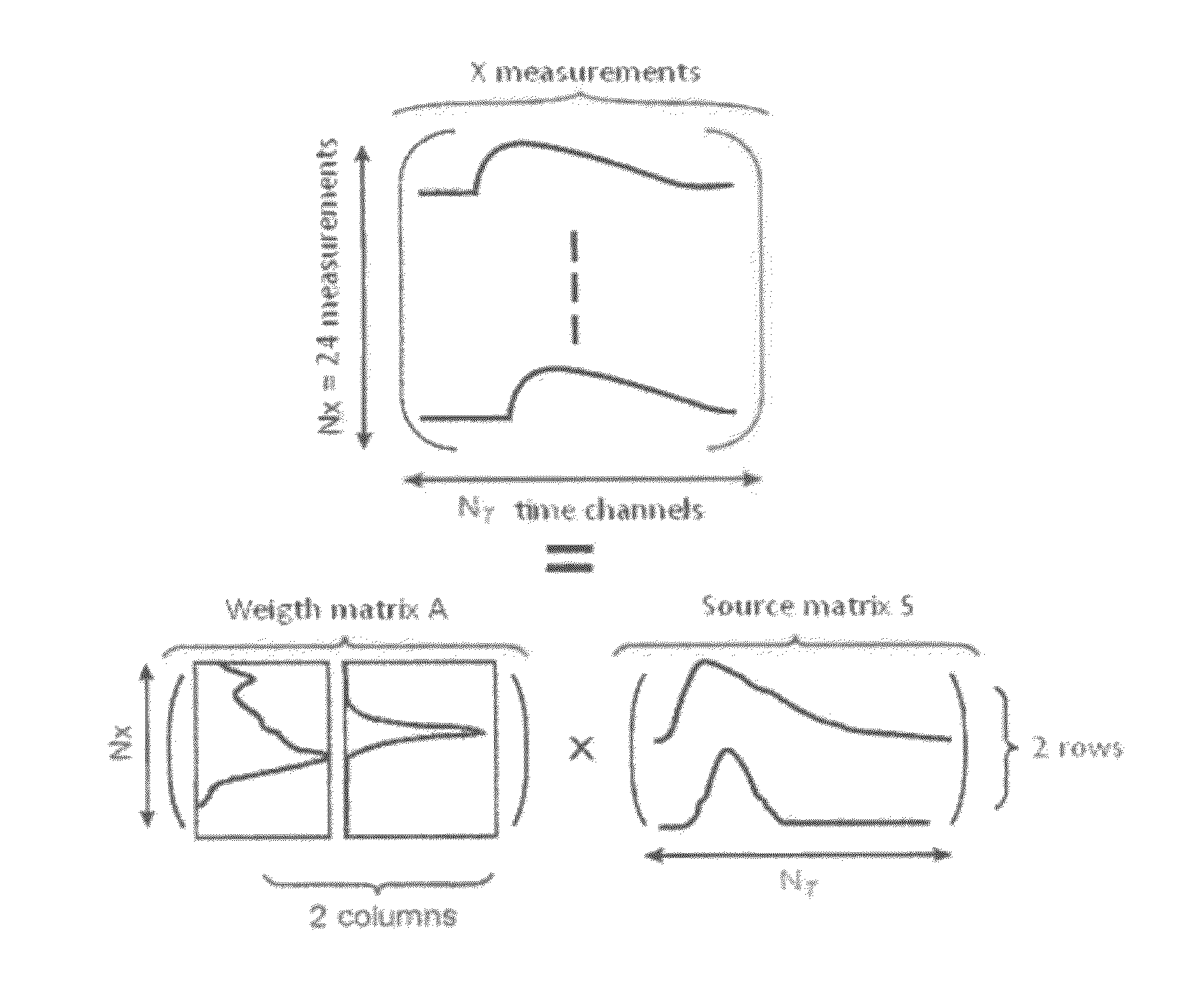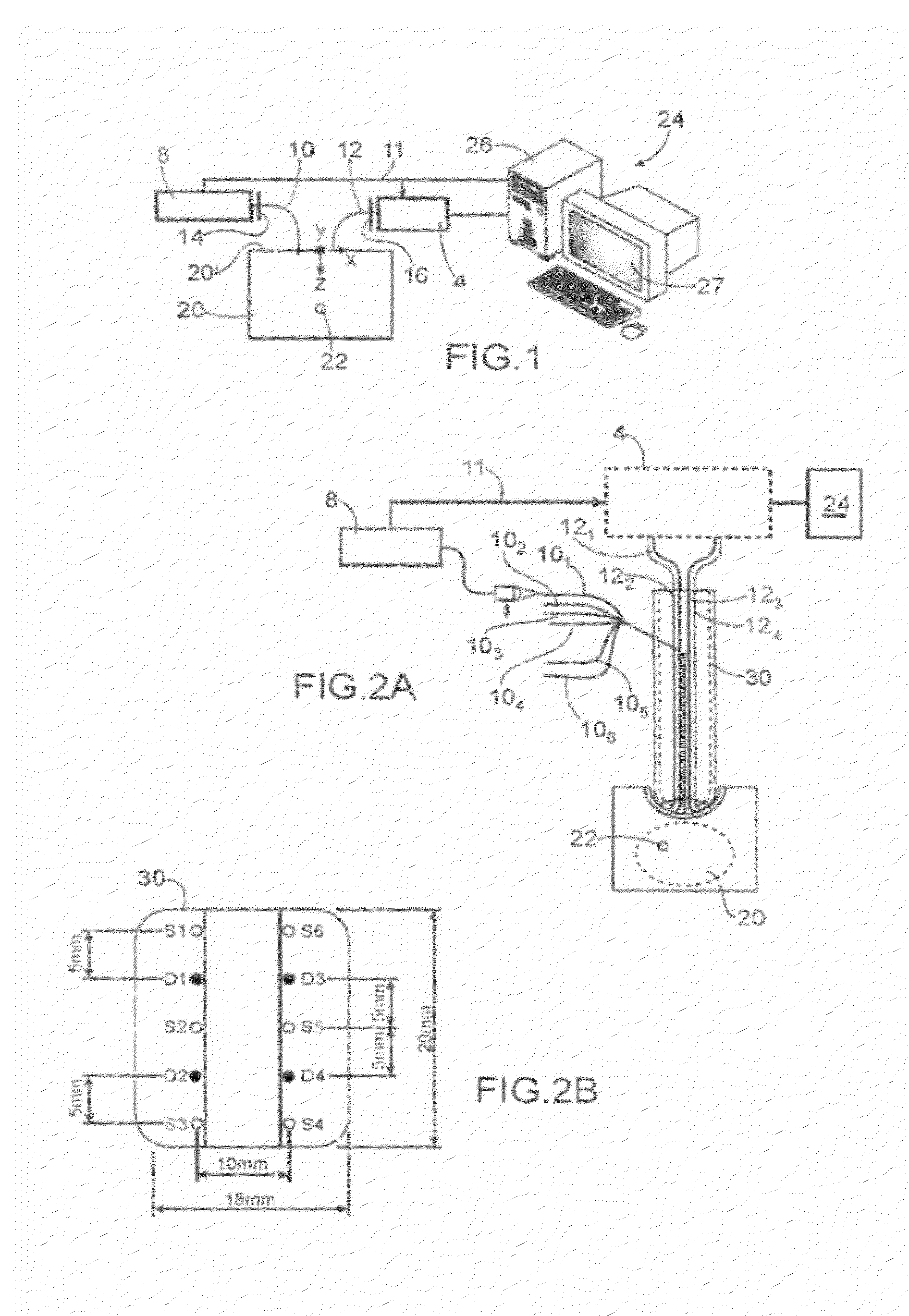Method for locating an optical marker in a diffusing medium
a technology of optical markers and diffusing mediums, applied in the field of optical imaging, can solve the problems of inability to detect specific fluorescence signals, limited fluorescence optical imaging, and inability to accurately detect specific signals,
- Summary
- Abstract
- Description
- Claims
- Application Information
AI Technical Summary
Benefits of technology
Problems solved by technology
Method used
Image
Examples
Embodiment Construction
[0027]An embodiment first relates to a method for processing data relating to at least one optical marker in a diffusing medium, wherein:
[0028]a) at least one acquisition of a time resolved optical signal is performed, this signal resulting from an excitation of the medium using a pulsed radiation source, each acquisition including on the one hand a component of interest, due to said marker, and on the other hand a spurious component,
[0029]b) a matrix X is made from each acquisition performed in step a).
[0030]Then, the data of said matrix X can be processed by factorizing this matrix into a product of two non-negative matrices A and S.
[0031]It is then possible to extract, or to determine or calculate or identify, the contribution of one of said components to at least one of said acquisitions, from terms of the matrices A and S.
[0032]According to one embodiment, such a method can further include a step of calculating or determining or identifying or locating the position of at least ...
PUM
| Property | Measurement | Unit |
|---|---|---|
| wavelength | aaaaa | aaaaa |
| distance | aaaaa | aaaaa |
| distance | aaaaa | aaaaa |
Abstract
Description
Claims
Application Information
 Login to View More
Login to View More - R&D
- Intellectual Property
- Life Sciences
- Materials
- Tech Scout
- Unparalleled Data Quality
- Higher Quality Content
- 60% Fewer Hallucinations
Browse by: Latest US Patents, China's latest patents, Technical Efficacy Thesaurus, Application Domain, Technology Topic, Popular Technical Reports.
© 2025 PatSnap. All rights reserved.Legal|Privacy policy|Modern Slavery Act Transparency Statement|Sitemap|About US| Contact US: help@patsnap.com



